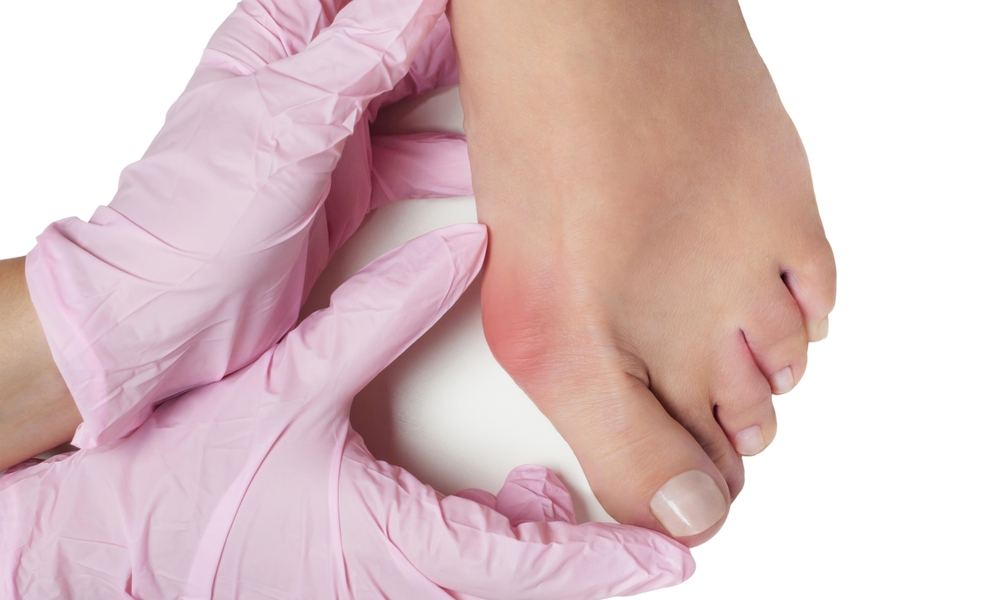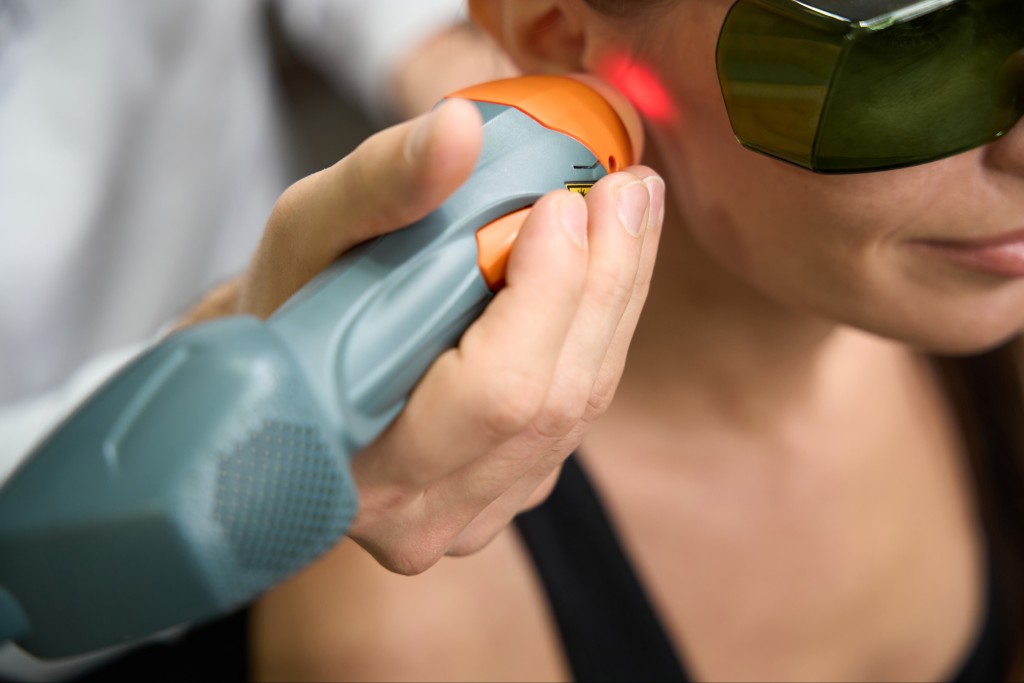As you’re going about your day, you suddenly slam your toe into a piece of furniture, sending a jolt of pain through your body. Afterward, you take a moment to assess the damage. At first, your toe might look red, and you may feel a throbbing pain. In a few hours, you look down and realize you are now dealing with stubbed toe swelling. How do you know if it’s not just a stubbed toe anymore and it’s a potential problem that needs attention? Here’s everything you need to know about a swollen toe and how your Atlanta chiropractor can help.
Causes of Toe Swelling
Toe swelling can occur for various reasons, ranging from minor injuries to more serious conditions. Some common causes include the following:
Stubbed Toe
Stubbing your toe is a common occurrence that can lead to swelling due to the impact, causing trauma to the tissues surrounding the toe. The force of the collision can result in bruising, inflammation, and damage to blood vessels and nerves in the area, leading to pain and swelling.
Broken Toe
A broken toe occurs when one or more of the bones in the toe are fractured, usually because of direct trauma or excessive force. The impact can cause the bone to crack or break, leading to pain, swelling, and sometimes deformity in the affected toe. Fractures can range from minor hairline cracks to more severe breaks that may require immobilization or surgical intervention to heal properly.
Sprained Toe
Like sprains in other joints, a sprained toe occurs when the ligaments connecting the bones of the toe are stretched or torn, usually due to sudden twisting or bending motions. This can happen during activities such as running, jumping, or even just tripping over an uneven surface. In addition to swelling, symptoms of a sprained toe may include pain, tenderness, stiffness, and difficulty moving the toe.
Ingrown Toenail
An ingrown toenail occurs when the edge of the toenail grows into the surrounding skin instead of growing straight out. This can happen because of improper nail trimming, wearing tight shoes, or injury to the toe. As the toenail digs into the skin, it can cause irritation, inflammation, and infection, leading to swelling, redness, and tenderness in the affected area.
Infection
Infections in the skin or nails of the toe can occur due to bacteria, fungi, or viruses entering through cuts, scrapes, or breaks in the skin. Common types of toe infections include cellulitis, a bacterial infection of the skin, and athlete’s foot, a fungal infection of the skin) In addition to swelling, symptoms may include redness, warmth, pain, tenderness, and drainage of pus or fluid from the affected area.
What To Do When You Stub Your Toe
If you’ve stubbed your toe, here’s what you can do to ease the discomfort and promote healing:
- Take a moment to rest: After stubbing your toe, try to stay off your feet for a little while to give the injured toe a chance to recover. Sit down and elevate your foot to help reduce swelling and inflammation.
- Apply ice: Immediately after the injury, apply an ice pack or a bag of frozen vegetables wrapped in a cloth to the injured toe. Ice helps to numb the area, reduce pain, and minimize swelling.
- Protect the toe: If the toe is particularly sore or tender, you may want to protect it by wearing comfortable, supportive footwear that provides cushioning and prevents further injury. Avoid wearing tight or restrictive shoes that may put pressure on the injured toe.
- Keep it clean: If there’s any broken skin or bleeding from the injury, gently clean the area with mild soap and water to prevent infection.
- Monitor for signs of more serious injury: While most stubbed toes are minor and heal on their own with home care, it’s important to monitor for signs of more serious injury, such as severe pain, inability to bear weight on the foot, persistent swelling or bruising, deformity of the toe, or numbness or tingling in the toe or foot. If you experience any of these symptoms, or if the pain and swelling worsen despite home treatment, it’s best to seek medical attention for further treatment.
How To Tell If Your Toe is Broken
If you are experiencing extreme pain after stubbing your toe, you might be wondering, “how do you know if you broke your toe?” Determining whether your toe is broken can be challenging without a medical evaluation, but here are some signs and symptoms that may indicate a possible fracture:
- Pain: A broken toe typically causes significant pain, especially when you try to move or put weight on the affected toe. The pain may be sharp, throbbing, or intense.
- Swelling: Swelling is a common symptom of a broken toe. The injured toe may appear noticeably swollen compared to the unaffected toes.
- Bruising: Bruising and discoloration around the injured toe is another common sign of a fracture. Broken toe bruising may appear soon after the injury or develop over time.
- Deformity: In some cases, a broken toe may cause visible deformity, such as misalignment or angulation of the toe. The toe may look crooked or out of place compared to its normal position.
- Difficulty moving the toe: A broken toe may be difficult or painful to move, especially if the fracture has caused damage to surrounding tissues.
- Tenderness to touch: The injured toe may be tender to the touch, and pressing on or around the area of the fracture may elicit strong pain.
Chiropractic Care for Swollen Toes
 When you think of a chiropractor, you might associate them primarily with the diagnosis, treatment, and prevention of neck and back pain. However, chiropractors work with the entire musculoskeletal system and provide a wide range of treatments. Your Atlanta chiropractor can assess the affected toe and determine whether the joint and surrounding tissues have become misaligned. They may perform a thorough examination to identify any underlying issues that could contribute to the swelling and may recommend X-rays or a CT scan as necessary. Chiropractors are trained in various hands-on techniques to treat and mobilize the joints and soft tissues of the body. Your chiropractor can also utilize manual therapy techniques to address issues in the feet and toes. For example, they may perform gentle adjustments or mobilizations to improve joint function and reduce inflammation in the toes as you heal from the injury.
When you think of a chiropractor, you might associate them primarily with the diagnosis, treatment, and prevention of neck and back pain. However, chiropractors work with the entire musculoskeletal system and provide a wide range of treatments. Your Atlanta chiropractor can assess the affected toe and determine whether the joint and surrounding tissues have become misaligned. They may perform a thorough examination to identify any underlying issues that could contribute to the swelling and may recommend X-rays or a CT scan as necessary. Chiropractors are trained in various hands-on techniques to treat and mobilize the joints and soft tissues of the body. Your chiropractor can also utilize manual therapy techniques to address issues in the feet and toes. For example, they may perform gentle adjustments or mobilizations to improve joint function and reduce inflammation in the toes as you heal from the injury.
Don’t let a stubbed toe turn into something worse! Visit AICA Orthopedics in Atlanta to get your toe injury checked out and find out whether you are dealing with bruised toes or a more serious issue.








